Over a decade ago, an average aquarist couldn’t keep Corals in his aquarium because they tend to die fast. Then emerging science and technologies found ways to keep these precious things in captivity, and then came several kinds of pests, including tiny worms.
Tiny worms in a saltwater aquarium are a nuisance that every saltwater aquarist wishes to get rid of.
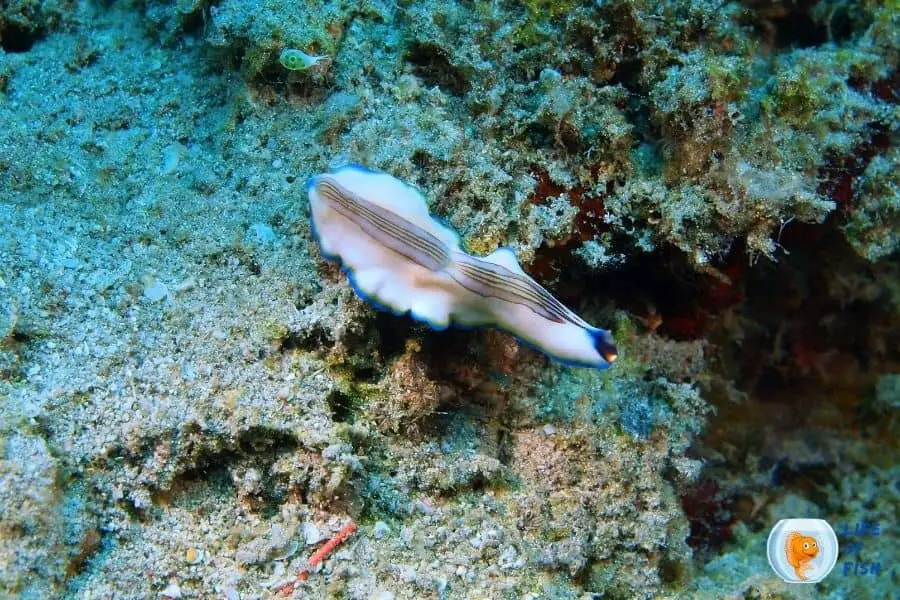
What are tiny worms in my saltwater aquarium?
Jump To
- 1 What are tiny worms in my saltwater aquarium?
- 2 How to identify them?
- 3 Are they harmful to reefs?
- 4 Are they harmful to other fish
- 5 How to get rid of them
- 6 Related questions
- 7 How do I get rid of detritus worms in my aquarium?
- 8 Tiny white worms on aquarium glass.
- 9 What eats detritus worms?
- 10 Do Cory catfish eat detritus worms?
Tiny worms are a common problem of saltwater aquariums. Unfortunately, they destroy your precious coral.
These tiny worms are called flatworms. Also known as Planaria, these organisms reside on the corals’ surface, eating the coral tissue and blocking the light, eventually causing the coral to die.
Unfortunately, these hitchhikers multiply within days and bring trouble for both the tank and us.
How to identify them?
Among several flatworm species, two types of flatworms cause trouble inside an aquarium; Rust Brown Flatworm and Acropora-eating Flatworm.
If you spot even one of these pests, you should take the necessary measures right away to keep them at bay.
Rust Brown Flatworm
These quarter inches long flatworms are tan, brown, or rust-colored with a red dot. They grow rapidly in aquariums hence have become a nuisance.
They are oval and slightly elongated in shape, with two tail-like appendages at the back.
These organisms multiply when in nutrient-rich environments and usually reside on the coral’s surface or areas with low water movements.
These flatworms harm the coral by blocking the adequate light, leaving the coral to starve. Some experts believe that Rust Brown flatworms feed on the zooxanthellae on the surface of the coral, damaging the corals themselves.
Acropora-eating Flatworm
This oval-shaped flatworm is white to opaque in color.
Therefore, it isn’t easy to notice these planaria in a display aquarium. As the name suggests, this flatworm eats the actual tissue of Acropora sp. corals at a fast rate.
This aggressive organism prefers Acropora species with shorter polyps and is most commonly found on Staghorn and Tricolor species.
Acropora-eating Flatworms are very invasive. So, you should take action immediately if you identify even one of them.
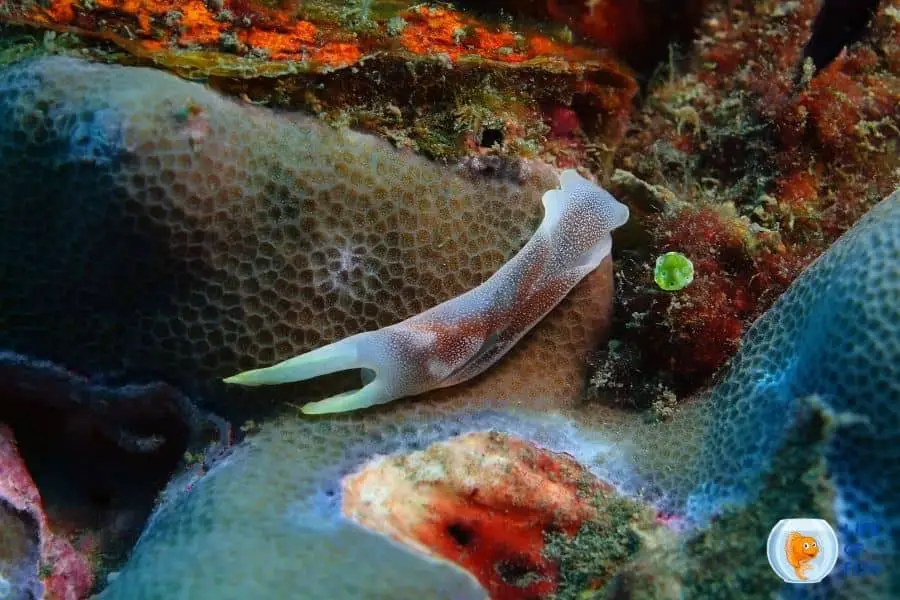
Are they harmful to reefs?
Some flatworms are believed to be harmless to reefs, while some actually harm, even kill them.
For example, Leopard Polyclad Flatworm is a harmless planarian that resides on corals. They use corals to hide in the day tie and nothing more.
This flatworm doesn’t even overgrow like the harmful flatworms we have mentioned above, and you will see only about one or two flatworms in an aquarium.
However, this flatworm grows so large which will make you an eyesore.
Are they harmful to other fish
Flatworms are carnivore scavengers but they do not harm any healthy fish.
However, they may harm unhealthy fish by consuming the eyes and the gills of vulnerable adult fishes. These planaria types are also dangerous to invertebrates like snails, pods, and shrimps.
So, if you spot any planaria in your home aquarium, it is better to get rid of them than making your aquarium life vulnerable.
How to get rid of them
The best approach to get rid of flatworms is prevention.
If you cut off the pathways for planaria to get into your aquarium, you can have a healthy reef environment in your aquarium.
However, there are some methods to remove or kill flatworms if an infestation has already happened. Following are the ways to get rid of flatworms.
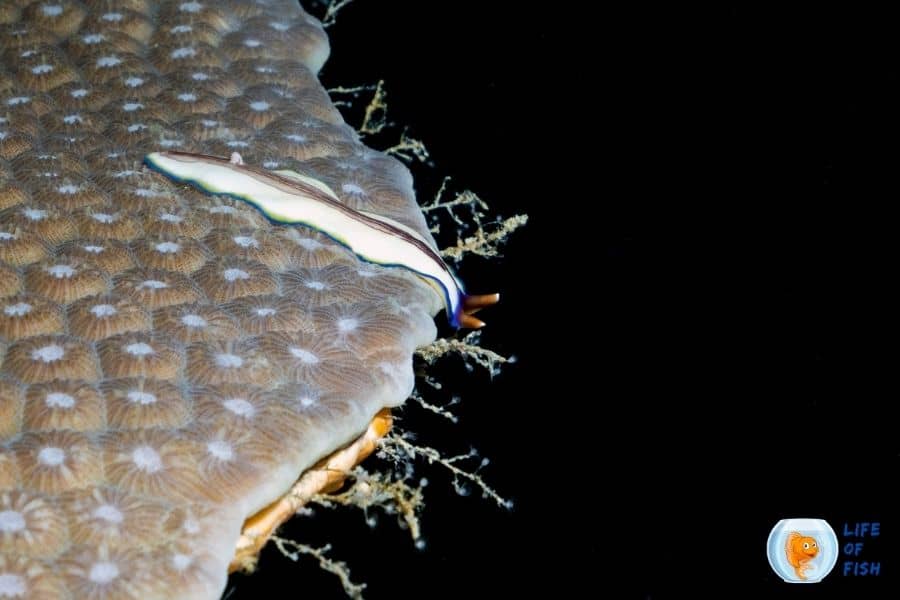
Quarantine
Properly quarantine every new coral specimen before introducing them to your display aquarium.
Keep the new specimen in a separate tank for at least a month and keep checking for any parasite species.
If you spot any parasites, treat them with proper medication. Introduce your specimen only after they show no symptoms of infestation.
This way, you can keep the initial introduction of flatworms to a minimum.
Natural Means of Control
In the natural method of flatworm control, we introduce flatworm predators into our aquarium.
You can add Wrasse of the genus Pseudocheilinus, such as the Six Line Wrasse (P. hexataenia), Macropharyngodon Wrasse such as the numerous Leopard Wrasse (Macropharyngodon sp.), Halichoeres Wrasse, such as Yellow Wrasse (H. chrysus), and Dragonets such as the Spotted Mandarin (Synchiropus picturatus) into the tank.
These fish are known to be excellent flatworm eaters, but they cannot eliminate flatworms completely. However, these fish will help you control the planaria population.
To eliminate flatworms, you can use Blue Velvet Nudibranch (Chelidonura varians) as this fish exclusively eat flatworms but will die eventually when the flatworm population extincts.
Blue Velvets are also very sensitive to changes in water chemistry, so it is harder to take care of them.
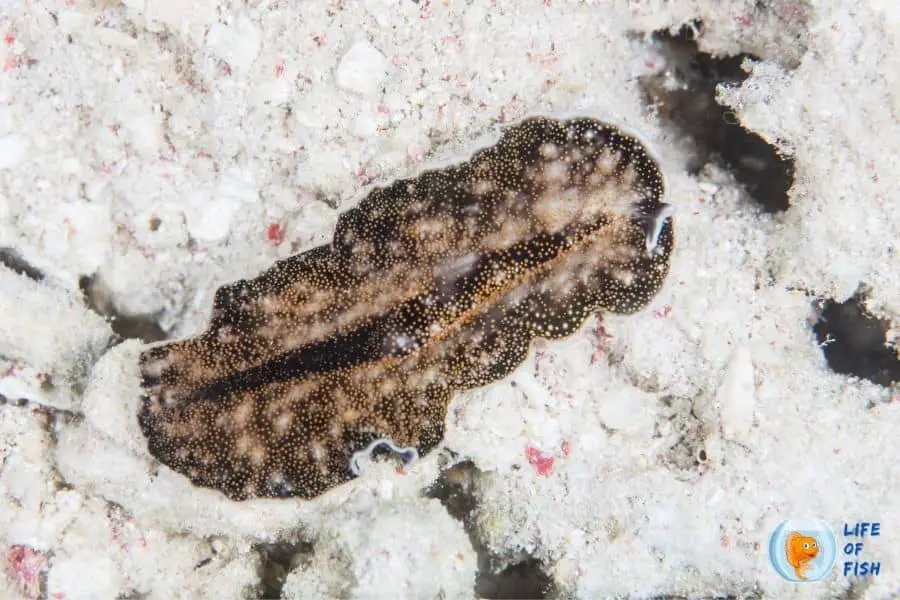
Mechanical Removal
Some flatworms like Rust Brown Flatworms do not attach themselves to the coral, which makes them easier to remove.
You can remove these flatworms with a small (1/4″ airline) siphon. Simply put the siphon onto the flatworm and gently vacuum them from the surface of the coral, not harming the coral’s surface by not touching them with the tube.
Another way to manually remove them is doing a brief freshwater dip or bath. Dip the colony in a dechlorinated freshwater for 5 to 10 seconds and shake the coral.
Flatworms are quite sensitive to changes in salt concentration. Therefore when you shake the coral, they will quickly lose their grip on the coral and collapse to the bottom of the container.
Be sure to set the temperature and the Ph level the same as the aquarium’s water to reduce the stress on the colony.
Chemical Treatment
Treating your corals with chemicals should be the last option as they may harm the coral if used improperly.
To kill flatworms, you can dip or bath the infected coral in these chemical solutions for a few seconds. These dips are reportedly effective and safe for reefs if you follow their instructions carefully.
Some of the proven chemical flatworm controls are,
- Coral Rx by Blue Ocean
- Flatworm eXit by Salifert
- Koral MD Pro by Brightwell
- Reef Dip by SeaChem
- Revive Coral Cleaner by Two Little Fishies and
- The Dip by Fauna Marin
Be careful to remove all other species from the aquarium if you use chemical controls on the aquarium.
Further, you should remove all the dead flatworms with a siphon because flatworms may contain toxins that may be released back into the tank water as the flatworms decay.
If you keep recommended nutrient levels while maintaining a clean environment by performing regular water changes, these parasites will not multiply most of the time.
Therefore, keeping a clean, healthy aquarium is always essential.
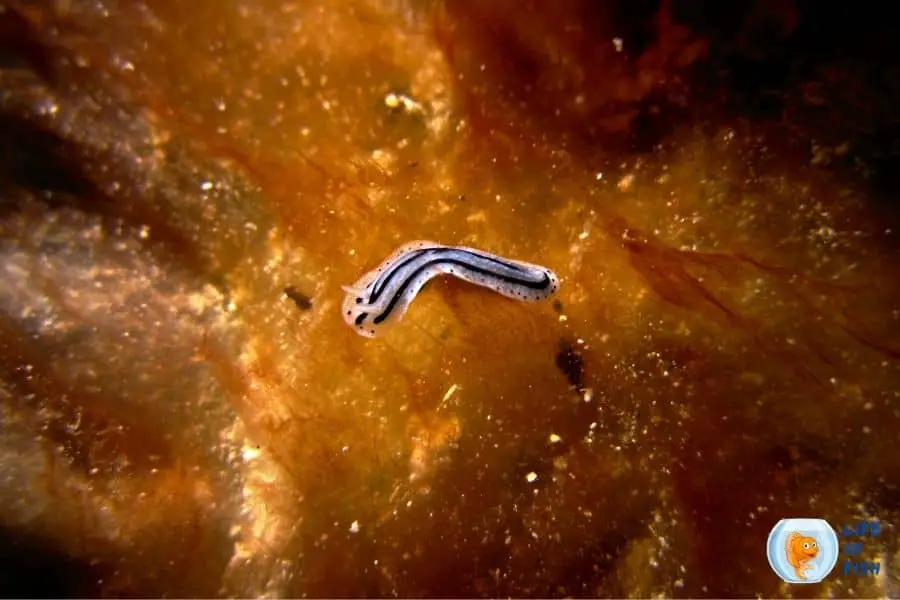
Related questions
How do I get rid of detritus worms in my aquarium?
Detritus Worms are annelid worms that don’t harm your fish.
They eat only decomposing plant and animal waste material and usually live in between pebbles of gravel as that’s where they receive plenty of food.
Detritus Worms are actually a beneficial symbiotic organism in your aquarium because they help to keep it clean.
However, as they are disgusting worms, every aquarist wishes to get rid of them.
Detritus worms are not hard to remove like planaria.
First you have to stop overfeeding your fish. Then, reduce the oxygen and pH levels of the water. This will trigger the worms to seek more oxygen by traveling up the water column toward the surface.
Then using a gravel vacuum, thoroughly vacuum all parts of the substrate. This will suck out detritus worms from your aquarium.
Then perform a thorough cleaning of your aquarium and check for any issues with the filter system as a well-maintained filtering system is essential to their prevention.
Ensure that your tank is not overstocked with fish and regularly clean the substrate to keep detritus worms at bay.
Tiny white worms on aquarium glass.
If you notice white tiny worms on aquarium glass, they are most likely either flatworms or roundworms.
Flatworms (planaria) have a flat appearance, while roundworms (nematodes) are more thin and wiggly.
Planaria is harmless to healthy fish but may feed on invertibrates such as shrimps, snails, and unhealthy fish’s eyes and gills.
On the other hand, roundworms are deadly to the fish if they entered their body because they are blood-feed parasitic worms. So, to be on the safe side, getting rid of both worm types is essential.
What eats detritus worms?
Every carnivore fish species will eat detritus worms if the worms float into the water column.
However, most detritus worms stick to the substrate, and you will have to introduce a bottom-feeder fish into your aquarium.
Loaches are the best bet for getting rid of detritus worms naturally, as they have a good appetite and will continuously search for these worms among the tank’s bottom.
You can choose any type of loach. However, some loaches like Clown Loach, Zebra Loach, Kuhli Loach, and Yoyo Loach are the favorites among aquarists.
Do Cory catfish eat detritus worms?
Although Corydoras Catfish are peaceful bottom-feeders that are excellent for community tanks, they do not feed on detritus worms.
They are not fast bottom feeders but are great at eating leftover food that hits bottom.
Read Next : How To Get Rid Of Blackworms In Fish Tank | 8 Useful Facts |
